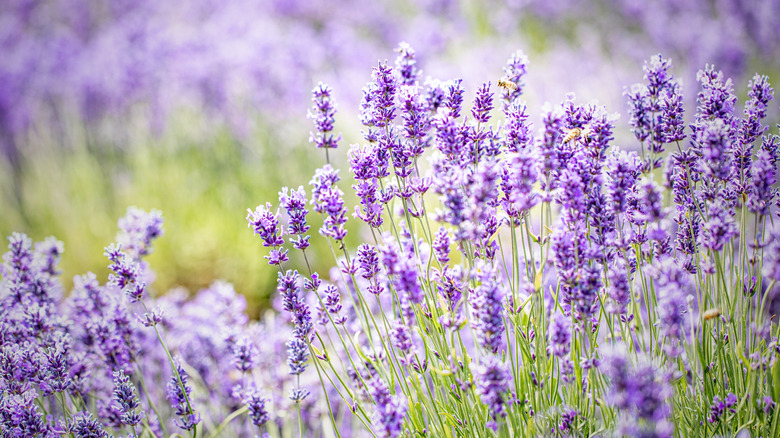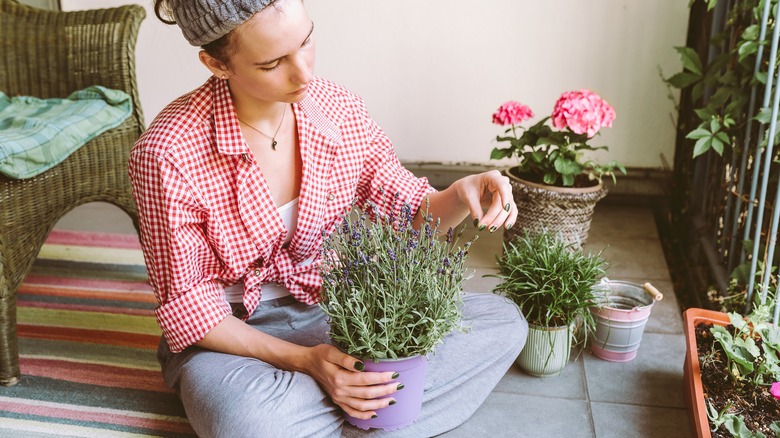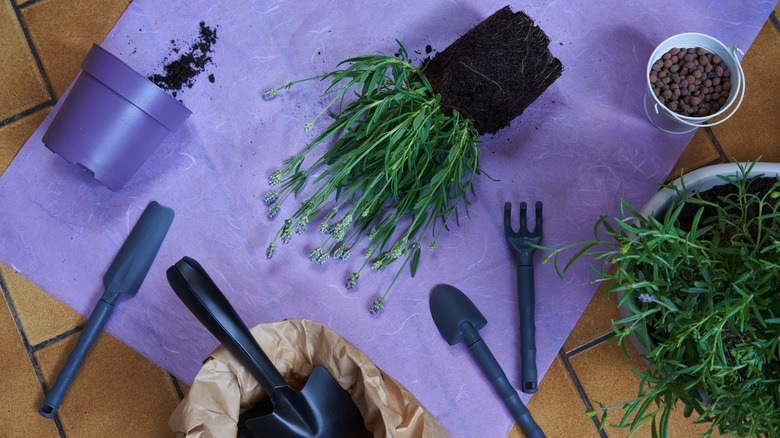Here's What Is Causing Your Lavender Plant Leaves To Turn Brown
Lavender plants create a sweet-smelling, vibrant garden and can be a source of great satisfaction for seasoned and novice gardeners. They are beautiful, simple plants that generally do not require a lot of effort or maintenance and provide great bang for their buck. Sometimes, though, these supposedly "easy" plants start to display brown, gray, or withering leaves — and fungal infection is typically to blame.
Botrytis and root rot are some of the more common fungi that can negatively impact a variety of plants, including lavender. Like most fungi, these organisms thrive in moist and humid environments. Lavender plants are typically grown in drier conditions and in soil that is loose, drains easily, and doesn't hold a lot of moisture. If fungal infection is present, that could be a sign that your lavender plant is being overwatered or is planted in the wrong type of soil. Remedying this situation can be a helpful way of addressing fungal infections and getting your beautiful lavender back on track.
Signs brown leaves are due to a fungal infection
Botrytis is sometimes also referred to as gray mold, as that is the color it typically displays on fruits and flowers, which is often where a gardener may first notice the infection. However, on lavender plants, it can manifest as browning leaves that may appear as though they are coated in brown or gray dust. The leaves are typically located near the base of the plant, closest to the part of the plant that is touching the overly moist soil. The "dust" you may see on the leaves is actually mold spores that can very easily spread to other leaves on the lavender plant or even plants in your garden.
Root rot, another fungal infection that could make your lavender plant's leaves turn brown, can be less apparent than botrytis. As its name implies, root rot is a form of fungal infection that begins under the ground, attacking a plant's roots. If you notice browning leaves on your lavender plant and suspect root rot could be a cause, it might be worth it to dig a little at the base of your plant. Root rot often leads to blackened, slimy roots that are clearly no longer capable of sustaining the plant.
How to address fungal infections in your lavender plant
Botrytis and root rot have different mitigation strategies, so it is crucial to determine what exactly is infecting your plant. With botrytis, your priority is to contain the infection so it cannot further spread. Carefully remove the browning, dusty leaves and dispose of them in the trash — not your compost pile or yard waste bin — you don't want the spores on the leaves to come into contact with any other plants. Then, address the cause of the problem by changing your watering schedule. You can also move your lavender plant to a drier area of your yard to prevent continued contact with waterlogged soil, where botrytis can thrive.
With root rot, the situation is a little more complicated. You will likely need to dig the lavender plant up and move it entirely or put it in a new pot if you have learned how to create a container jungle garden. Blackened and slimy roots, unfortunately, cannot be saved and will need to be removed. It can also be helpful to spray any uninfected roots with a fungicide solution to lessen the chance of the condition spreading.


